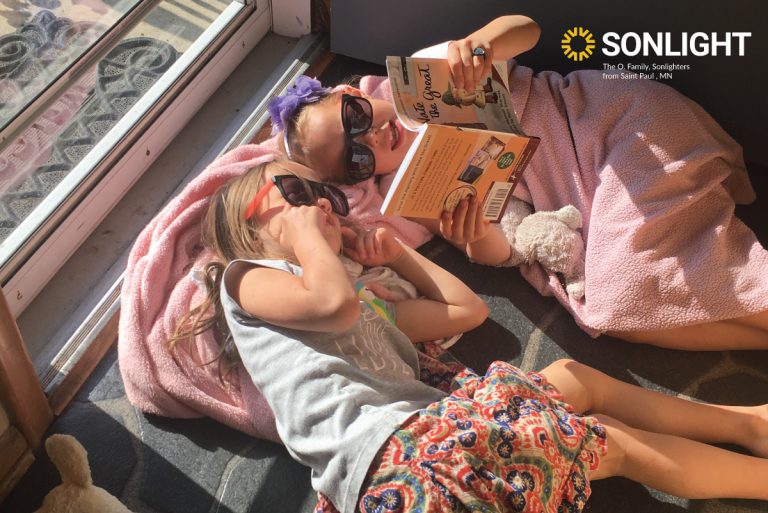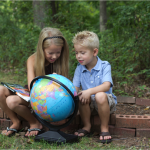As homeschoolers, we have all gone through periods where our children just don’t seem to be interested in their history lessons.
History is full of long, unusual names of people and places that are hard to pronounce and even harder to keep track of. Consider two simple examples of how history's names can be confusing:
- King Jehoram of Judah and King Jehoram of Israel ruled during the same time.
- Charlemagne, son of Pepin, had sons named Charles and Carloman (who was later renamed Pepin).
Another barrier? History doesn't progress in an orderly, linear fashion. It’s messy, chaotic, and hard to interpret.
- While one part of the world is living in a Golden Age, another might be in the Bronze Age.
- While one country is at war, a neighboring country might be at peace.
- While the Pharaoh Ramses III was fighting off sea invaders, the Olmecs in Mexico were building giant heads, and King Nebuchadnezzar was preparing to become King of Babylon.
And finally, it can be hard for children to relate to life in far off cultures that are so different from their own.
In order for children to invest in their history lessons, they must feel some sort of connection to the topic. Here's help for presenting history in a more interesting and memorable way, one that can overcome the obstacles to retaining history details.
1. Ask Questions
Don’t be afraid to ask your child what they think about what is happening or if they understand what is going on. If they aren’t able to answer or aren’t really sure, this is a great time to stop and clarify. You might need to teach them how to listen to Read-Alouds.
2. Use Mnemonics
Names of people and places can be hard to remember. Help your child keep track of them by using nicknames. For example, my children were struggling to remember all the names of characters in a book, so we promptly nicknamed the one called Dorantes, Doritos, to make it easier to remember. From that point forward, every time they got confused about who he was, someone would call out, “He’s the Doritos guy,” and everyone would immediately recall his place in the book.
3. Translate Unknown Foreign Words
Breaking down the names of people and places can make it easier for children to follow along. It’s fairly easy to remember Stonehenge is the place with all the standing stone. It's clear that China's Forbidden City was named because of its forbidden status.
But you may need to spend 30 seconds researching the meaning Angkor Wat, a large temple complex in Cambodia—Temple City. When you know that Peru's Machu Picchu, a citadel at the top of a mountain, means Ancient Mountain, it's easier to make sense of the name.
4. Watch a Video
It is a special blessing to homeschool in today’s digital age when we can find videos at the click of a button to show a walkthrough of the locations in our history lessons. Take a virtual tour of the palace on the island of Crete or the ruins of the Acropolis.
5. Review and Build Connections
When you’ve finished covering Ancient Mesopotamia in History / Bible / Literature B, and are ready to move on to Ancient Egypt, don’t stop talking about Mesopotamia. Compare how both groups gathered food, used writing, or used rivers. When one country invades another, bring up what you remember about the invaded country. Don’t be afraid to draw those connections for your children, as well as to help them draw their own.
6. Use Maps
Maps are a great visual way to track events from history. You can track World War I and II on a map and see how borders changed or follow Alexander the Great’s campaigns. Maps help children see how geography itself contributed to wars and victories.
7. Use Timelines
Timelines help children see how people connect to each other. For example, although Beethoven and Lewis and Clark never met, they both lived at the same time and were both affected by worry about Napoleon.
8. Discuss Personal Memories
Children are more likely to connect to personal memories than to abstract history. If you remember your grandparents telling you about life in the early 1900s, or your uncle has stories to share about his adventures in World War II, take the time to share those family stories.
9. Add More Books
While Sonlight does provide a large variety of books, if a child is struggling on a certain topic, or wants to learn more, don’t be afraid to add extras. The more children understand, the more hooks they have to hang more information.
10. Make it a Meal
Even picky eaters will try new foods they helped prepare. Have a Greek feast while exploring Ancient Greece, or enjoy blueberries and milk with the Boxcar Children. Adding one new spice or making a new dish can bring history to life in a way your child can experience.
11. Act it Out and Dress it Up
Children, especially young children, learn best through play. While workbooks and tests have their place, play is how children explore and interact with their world.
- Dress up in Roman togas by wrapping a sheet around your child and securing it with a hair band
- Build a tent across a table for a dining room camp out.
- Have your child put on an outfit in under a minute to see how hard it would be to be a minuteman.
Give your child time to play and ask them to come up with their own ways to act things out.
12. Create It
Building and creating forge an understanding of how things work and what they looked like.
- use a lap book kit or hands-on kit
- create a map of the area depicted in a Reader or Read-Aloud
- draw a picture
- build a house out of LEGO bricks or sticks
- color pictures of people in historical dress
13. Revisit It
Children learn best when things are reviewed frequently. In fact, studies show children retain things better and longer if they are covered again a few times over the next months or years. So don't consider it one and done when it comes to history. Expect to circle back multiple times not only in your curriculum but also
- in conversation
- at museums and other field trip locales
- when out and about town or traveling
- when watching movies and documentaries
Each time your children revisit a nugget from history, it adds another layer to their memory bank and helps preserve the information.
You will likely be surprised days, weeks, and even years down the road by how much of Sonlight History your child recalls. I have read my older children books I wasn’t sure they connected with. Years later when I have used that same book with with younger siblings, I was surprised to hear the older ones say, “Oh, that’s such a great book. It’s about….”, offering specific details I never knew they grasped!









